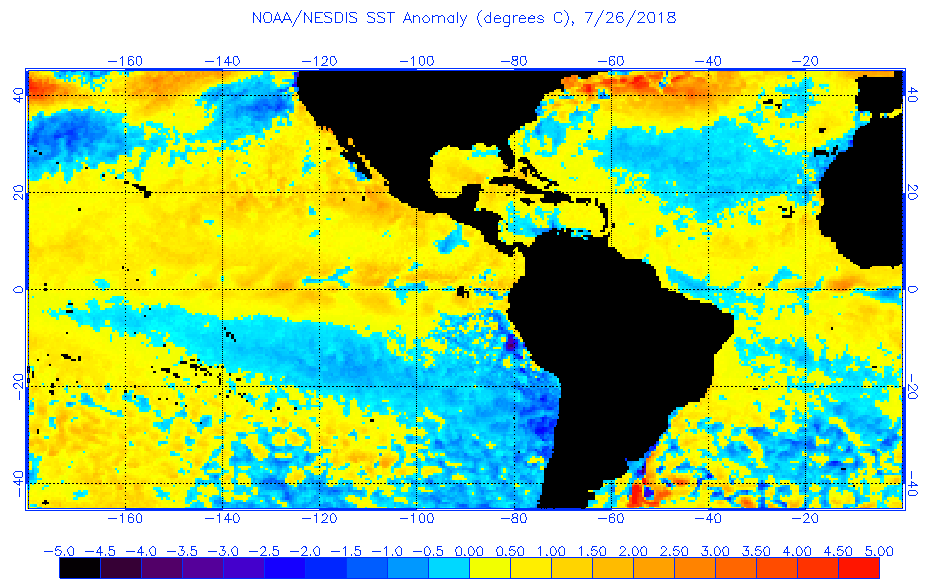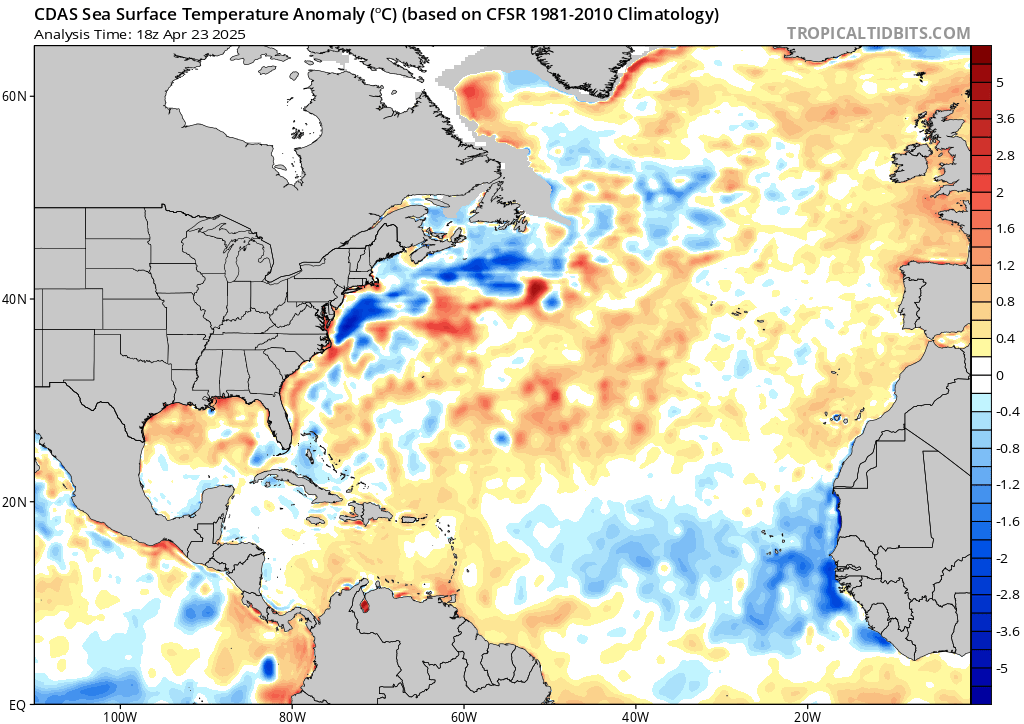chaser1 wrote:stormlover2013 wrote:https://www.wunderground.com/cat6/High-Octane-Hurricane-Fuel-Gulf-Mexico-2-Loop-Current-Eddies
Not sure if others are having similar difficulties but this link keeps coming back as a "dead link".
Here's what the article says:
There’s potential trouble cooking in the Gulf of Mexico for the coming peak portion of the Atlantic hurricane season: a near-record amount of heat energy in the ocean waters. Sea surface temperatures (SSTs) are near average, 29° – 30° C (84° – 86° F) in the eastern Gulf, where persistent cloud cover and windy conditions in recent days have acted to keep SSTs from warming to above-average levels. However, SSTs are 30° – 31°C (86° - 88°F) in the central and western Gulf, more than 1°C (1.8°F) above average. That’s a lot of heat in the waters for potential hurricanes to feast on.
But SSTs don’t tell the whole story. When a slow-moving hurricane traverses a shallow area of warm ocean waters, the hurricane’s powerful winds will churn up cold waters from the depths, cooling the surface and putting the brakes on any rapid intensification the hurricane may have had in mind. But when unusually warm ocean waters extend to great depth—down 100 meters or more below the surface—the hurricane’s churning winds simply stir up more warm water, allowing dangerous rapid intensification to occur if wind shear is low. Last year’s trio of great hurricanes—Harvey, Irma, and Maria—all underwent rapid intensification into major hurricanes when they were located over waters with above-average SSTs, where the warm waters extended to great depth. Thus, total Ocean Heat Content (OHC) is a key metric used to determine the potential for hurricane rapid intensification
Meet the Loop Current
In the Gulf of Mexico, the deepest warm water is found in the Loop Current--an ocean current that transports warm Caribbean water through the Yucatan Channel between Cuba and Mexico. The current flows northward into the Gulf of Mexico, then loops southeastward just south of the Florida Keys (where it is called the Florida Current), and then goes just west of the westernmost Bahamas. Here, the waters of the Loop Current flow northward along the U.S. coast and become the Gulf Stream. With current speeds of about 1.8 mph (0.8 m/s), the Loop Current is one of the fastest currents in the Atlantic Ocean. The current is about 200 - 300 km (125 - 190 miles) wide, and 800 meters (2600 feet) deep, and is present in the Gulf of Mexico about 95% of the time. During summer and fall, the Loop Current provides a deep (80 - 150 meter) layer of very warm water that can provide a huge energy source for any hurricanes aspiring to become rapidly intensifying major hurricanes.
The Loop Current commonly bulges out in the northern Gulf of Mexico and sometimes will shed a clockwise rotating ring of warm water that separates from the main current (Figure 2). This ring of warm water slowly drifts west-southwestward towards Texas or Mexico at about 2 – 3 miles per day. This feature is called a "Loop Current ring", "Loop Current eddy", or "warm core ring", and can provide a key source of energy to fuel rapid intensification of hurricanes that cross the Gulf (in addition to the Loop Current itself). The Loop Current pulsates in a quasi-regular fashion and sheds rings every 6 to 11 months. When a Loop Current eddy breaks off in the Gulf of Mexico at the height of hurricane season, it can lead to a dangerous situation where a vast reservoir of energy is available to any hurricane that might cross over. This occurred in 2005, when a Loop Current eddy separated in July, just before Hurricane Katrina passed over and "bombed" into a Category 5 hurricane. The eddy remained in the Gulf and slowly drifted westward during September. Hurricane Rita passed over the same Loop Current eddy three weeks after Katrina, and also explosively deepened to a Category 5 storm.
Even when a Loop Current eddy has been separated from the Loop Current for more than a year, it can still provide a potent source of heat energy for a hurricane. Hurricane Harvey of 2017 was fueled by an old Loop Current eddy that had migrated to the coast of Texas, a full 16 months after it had broken off from the Loop Current. This heat energy contributed to Hurricane Harvey’s record rains. A 2018 paper by Kevin Trenberth of the National Center for Atmospheric Research, Hurricane Harvey Links to Ocean Heat Content and Climate Change Adaptation concluded: “The bottom line is that the total observed OHC change is remarkably compatible with the total energy released by precipitation and, unsurprisingly, reflects strong energy exchanges during the hurricane. Accordingly, the record high OHC values not only increased the latent heat which fueled the storm itself, likely increasing its size and intensity, but also likely contributed substantially to the flooding caused by rainfall on land. The implication is that if the OHC had been less, then the rainfall amounts would also have been less.
Two Loop Current eddies in the Gulf for the 2018 hurricane season
A large warm eddy broke off of the Loop Current in February 2018, and has drifted slowly west-southwest during the year, arriving in late July to a position about 300 miles east of the Texas/Mexico and border and 400 miles south of western Louisiana (Figure 3). As if that weren’t enough, we had a new and larger warm eddy break off from the Loop Current in late June. That eddy is located a few hundred miles west of the southwest coast of Florida. Both of these eddies are capable of supplying major heat energy to tropical cyclones that might get loose in the Gulf. The total amount of heat energy in the Gulf right now is at near-record levels for this time of year—similar to last year’s levels, and far higher than what was observed during the nasty Hurricane Season of 2005.






















